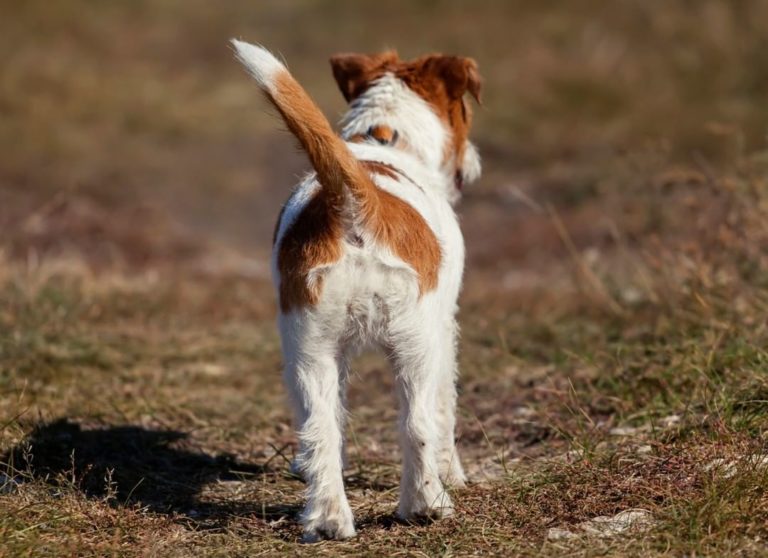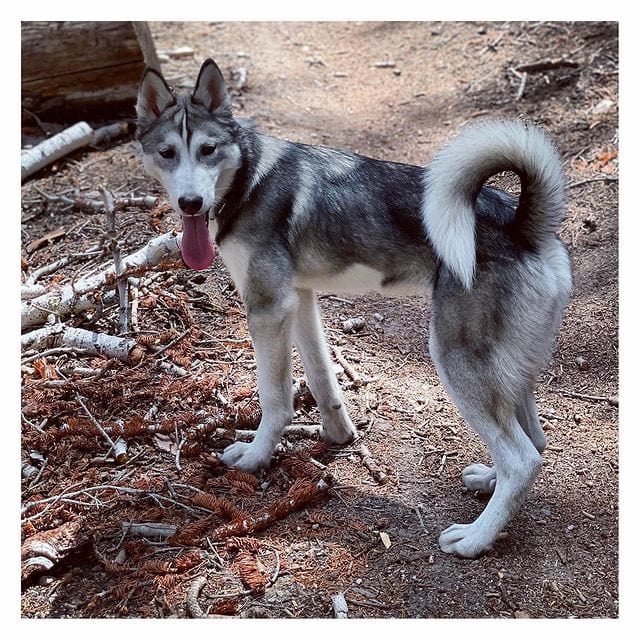We all feel delighted every time our furry best friends greet us with their wagging tails and smiling faces. But, you may sometimes wonder why dogs have tails. What purpose does it serve? Is it a useful appendage, or can they live without it?
Dogs, like most mammals, develop tails as an evolutionary necessity. We humans develop tails when we are developing in our mother’s womb. It just falls back and fuses with our vertebrae that form our coccyx or tailbone. We do not need much of it since we are upright mammals.
Tails play an important role in our dogs’ anatomy and physiology, serving dogs in three ways: balance, movement, and communication. Some tails can be short, like a Pug’s and a French Bulldog’s, while others can be as long as that of a Golden Retriever. Some also come in straight forms or curled-up. Whatever the breed, a tail plays an important role in their daily lives.
In this article, we will dive into the significance of that bony appendage in our dog’s daily life.
Why Do Dogs Have Tails?

Dogs, just like many mammals, have tails to help them move, maintain balance, and communicate with other dogs.
Our dogs’ tails consist of a string of small bones ranging from 6 to 20 vertebrae. The tails are an extension of their spine, and some may mistake these for cartilage.
Tails work in conjunction with the muscles and bones in their rear body to create movement.
Movement
Our dogs’ tails assist in their movement. They use their tails every time they change directions while walking or running, when they are jumping, or when they are swimming.
You will notice that when fido is walking straight and suddenly turns to its right or left, its tail will point in the same direction as its front body and front legs while its rear legs remain in the original direction.
The tail works to prevent the rear body from swinging widely and possibly toppling over, especially when they are running at high speeds. Their tails act as a counterweight measure to reduce their body’s tendency to tumble off course.
Not to forget that our dogs’ tails also help whenever they are jumping. Their tail would point down every time they jump up for elevation and point up when they land in the ground. It is comparable to an aircraft’s flaps that control its aerodynamics by increasing or reducing speed and lag.
Moreover, dogs’ tails are also useful as a rudder whenever they are swimming. A Golden Retriever’s thick and flexible tail helps it to move and make quick turns effortlessly in the water.
Balance
Although a tail is not necessary to maintain stability for a dog while they are simply walking or standing, certain activities do require some form of equilibrium.
Every time they walk along with narrow spaces, like maybe traversing a piece of log across a narrow river, their tails help to maintain some form of balance.
Their tail balances their bodies by putting their weight opposite their tilt. It is very much like a tightrope walker holding a long bar to counterbalance its weight.
And for navigation? The tails allow dogs to navigate with ease walking on uneven surfaces or climbing up or downstairs.
May we also add that those dog trainers who test the agility of dogs during obstacle run look at the position of their tails. Dogs who are uncomfortable in a particular obstacle tend to carry their tail higher.
This means that the dog needs more training in that particular event to get more confident.
Communication
A dog’s bark or even its gaze is not the only means of communication a dog can use. Their tails also tell a tale of their own.
Dogs usually start wagging their tails at the age of 30 to 50 days old when they learn to socialize with their littermates. They learn to communicate their emotions through their interactions.
We all know that they are happy when they wag their tail every time they see us, or they are in pain or being submissive if they try to hide it between their legs.
But there is more to tail wagging that dog psychologists are learning. Things like how high they carry their tail, how fast it is moving, and even the direction of tail wagging tells a lot about their moods and intentions.
A narrow-wagging tail means a tentative greeting, while a broad wag means they are happy. A slow wag at half-mast means a sign of insecurity.
And, fast-moving, vibrating tiny wags could mean it is about to pounce on you or another dog.
Furthermore, a tail pointing to their left signals a negative feeling, while a right-pointing tail signifies positivity and means it is safe to approach them.
Dogs also use their tails to release pheromones and signify to other dogs that they are present.
The pungent liquid is released when the tail contracts the muscles of the anal sacs. Pheromones communicate not only their sexual readiness but also their aggression and their fears concerning other dogs.
On the other hand, submissive dogs hide their scents by keeping their tails tucked, thereby keeping themselves unnoticed by other dogs.
What Do Dog Tail Shapes Mean?

There are hundreds of breeds of dogs, and each of them has different-looking tails based on the particular work it was bred to do.
Golden Retrievers and Labradors have otter or swimmer tails that are rounded and thick. They form a small arch and tapers onto the tip, which serves as a rudder every time they swim.
Terriers and Dachshunds have carrot tails that are moderately short with a thick base. These breeds were used for hunting vermin underground, and farmers or hunters would use their tails to yank them out of the holes when they got their prey.
Samoyeds, Chow Chows, and Siberian Huskies have sickle-shaped tails. The plumed tail curves back up over the dog and help to keep them safe from the harsh wintry environment by letting it cover their nose and eyes from snow and strong winds.
Some breeds of dogs are born with very short tails or bobbed tails like Jack Russell Terriers or Australian Shepherds.
Some dog breeds have no bones in their tails at all but just a bit of fatty tissue. Other breeds have their tails docked for aesthetic purposes, such as the Doberman Pinscher.
It should be noted that dogs with docked tails can still maintain their balance since their bodies had adjusted and got accustomed to a shorter tail when they were puppies.
Other breeds would have a tail that develops into a corkscrew-like the Pug, while some would have tufted tails like the Poodle.
Does The Length Of The Tail Matter?
Yes, scientific studies found that dogs with longer tails are likely to be approached more by other dogs. It is because a longer tail gives more information in terms of communication than a shorter tail will provide.
They did the experiment using robot dogs and found that dogs are less hesitant to approach the robot with a long, wagging tail than the one with a shorter tail.






